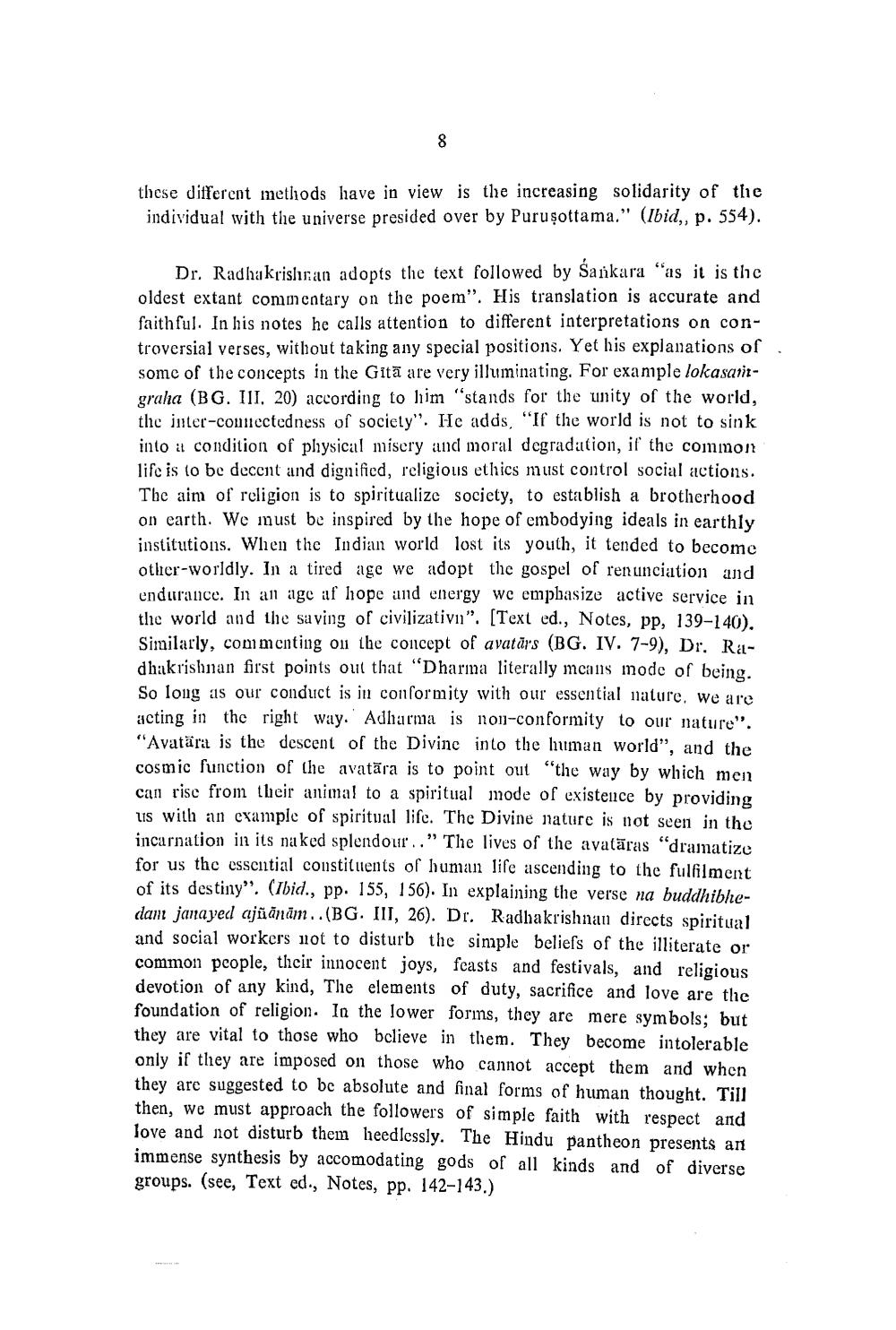________________
8
these different methods have in view is the increasing solidarity of the individual with the universe presided over by Purusottama." (Ibid., p. 554).
Dr. Radhakrisluran adopts the text followed by Sankara "as it is the oldest extant commentary on the poem". His translation is accurate and faithful. In his notes he calls attention to different interpretations on controversial verses, without taking any special positions. Yet his explanations of some of the concepts in the Gitā are very illuminating. For example lokasaritgraha (BG. III, 20) according to liim "stands for the unity of the world, the inter-connectedness of society". He adds, "If the world is not to sink into a condition of physical misery and moral degradation, if the common life is to be decent and dignificd, religious ethics must control social actions. The aim of religion is to spiritualize society, to establish a brotherhood on carth. We must be inspired by the hope of embodying ideals in earthly institutions. When the Indian world lost its youth, it tended to become other-worldly. In a tired age we adopt the gospel of renunciation and endurance. In an age af hope and energy we emphasize active service in the world and the saving of civilizativ". (Text ed., Notes, pp, 139-140). Similarly, commenting ou the concept of avatārs (BG. IV. 7-9), Dr. Radhakrishnan first points out that "Dharma literally means mode of being. So long as our conduct is in conformity with our essential nature, we are acting in the right way. Adharma is n011-conformity to our nature". "Avatāra is the descent of the Divine into the human world", and the cosmic function of the avatāra is to point out “the way by which men can rise from their animal to a spiritual mode of existence by providing us with an example of spiritual life. The Divine nature is not seen in the incarnation in its naked splendour'. ." The lives of the avatāras "dramatize for us the essential constituents of human life ascending to the fulfilment of its destiny". (ibid., pp. 155, 156). In explaining the verse na buddhibhedam janayed ajñānäm..(BG. III, 26). Dr. Radhakrishnan directs spiritual and social workers not to disturb the simple beliefs of the illiterate or common people, their innocent joys, feasts and festivals, and religious devotion of any kind, The elements of duty, sacrifice and love are the foundation of religion. In the lower forins, they are mere symbols; but they are vital to those who believe in them. They become intolerable only if they are imposed on those who cannot accept them and when they are suggested to be absolute and final forms of human thought. Till then, we must approach the followers of simple faith with respect and love and not disturb them heedlessly. The Hindu pantheon presents ant immense synthesis by accomodating gods of all kinds and of diverse groups. (see, Text ed., Notes, pp. 142–143.)




